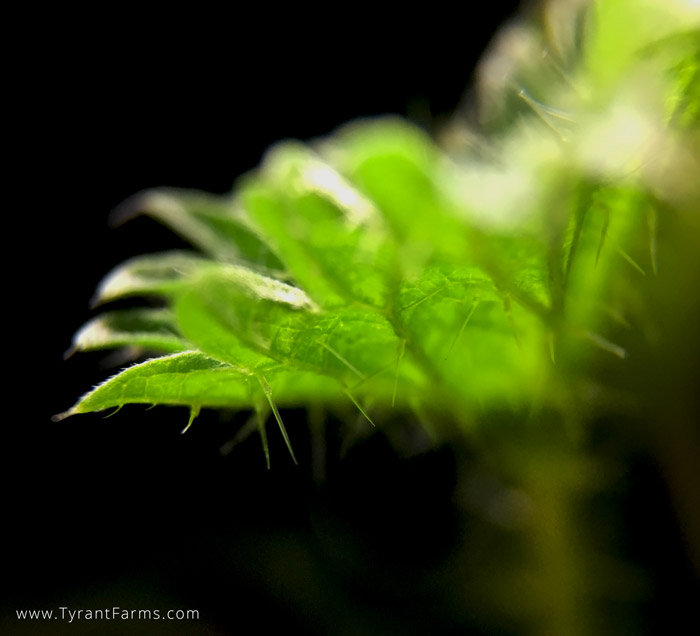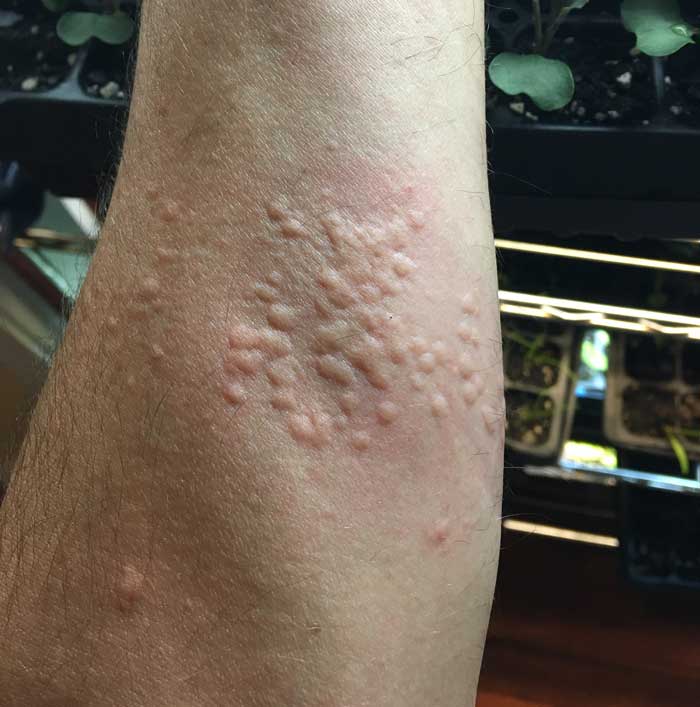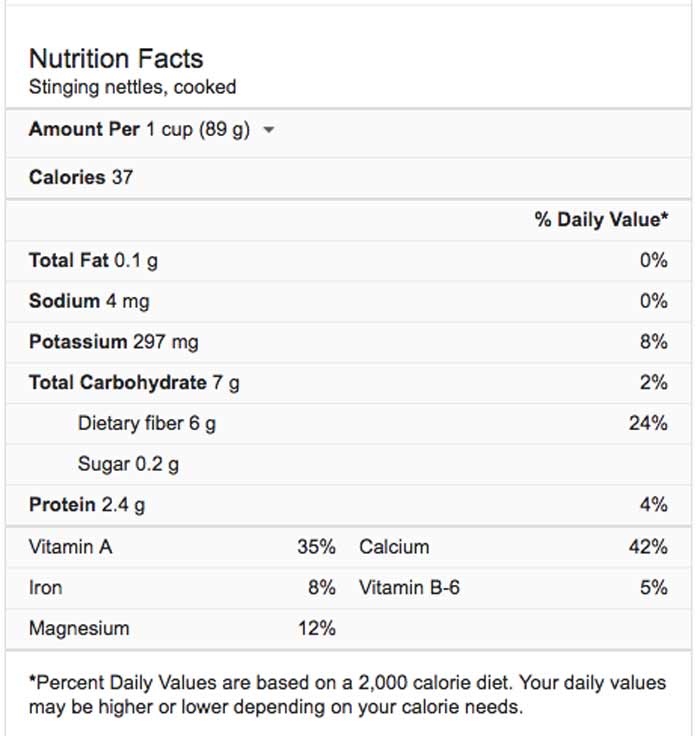The plant is approximately 40% protein when dried and is a complete protein with a very similar amino acid profile to eggs. ... Every single part of the plant has either a nutritional or material use, including making cordage. Of course, nettle does have an ability to “sting”.Milarepa, the most famous yogi of Tibet, when he was not meditating, then lived off stinging nettles. He skin was green.
Nettle contains calcium that is easily absorbed by the body unlike most over the counter supplements. Nettle also includes vitamin C, iron, protein, dietary fiber and other minerals....“Results show that processed nettle can supply 90%–100% of vitamin A (including vitamin A as β-carotene) and is a good source of dietary calcium, iron, and protein.....
- Vitamins: Vitamins A, C and K, as well as several B vitamins
- Minerals: Calcium, iron, magnesium, phosphorus, potassium and sodium
- Fats: Linoleic acid, linolenic acid, palmitic acid, stearic acid and oleic acid
- Amino acids: All of the essential amino acids
- Polyphenols: Kaempferol, quercetin, caffeic acid, coumarins and other flavonoids
- Pigments: Beta-carotene, lutein, luteoxanthin and other carotenoids
they are covered in tiny hollow hairs which are made of silica, so essentially glass tubes, which prick the skin and deliver a poison.The "poison" is actually formic acid? and acetylcholine.... which is also increased when the vagus nerve is activated.
I've read that they make good livestock feed once they are cut, as the sting is deactivated once dried. I am using them dried as tea and they definitely don't sting dried.I was making big nettle harvests off our ten acres - next to the forest... and in the forest a bit. We got Red Admiral butterflies - so not sure if I was accidentally harvesting their eggs. I tried to keep an eye out for the eggs....
I eat them lightly steamed and they are one of my favorite greens. Only the tender tips should be eaten ( whatever you can pinch off easily - wearing gloves!),
Stinging nettle has been used for hundreds of years to treat painful muscles and joints, eczema, arthritis, gout, and anemia. Today, many people use it to treat urinary problems during the early stages of an enlarged prostate (called benign prostatic hyperplasia or BPH), for urinary tract infections, for hay fever (allergic rhinitis), or in compresses or creams for treating joint pain, sprains and strains, tendonitis, and insect bites.So I got the seeds that I ordered - 10,000 seeds is actually just one "packet."
Some gardeners recommend that the herb seeds have a cold treatment before germinating. If starting the seeds indoors, freeze the herb seeds for several weeks before sowing the Stinging Nettle seeds.That have to be WET and cold....
wow - never noticed how BIG the stingers are!!
So good "fencing" to keep out intruders:
pretty impressive food source!!!
93 reviews for these seeds - over at Lameazone
2)
3) Toss the seeds and slightly dampened soil in the freezer for a week before planting.
4) Try putting the seeds in a small amount of soil, then placing them in the freezer. These seeds need to have a "frost" period which jump starts them.
5) I have bought stinging nettle seeds from other companies and the only way i get the seeds to sprout is by cold stratifying them for a few weeks. I just sprinkle them on top of soil in a small planter make sure it is slightly damp and put it in a plastic bag in my fridge for a few weeks. when I do this I get almost 100 percent germination. when I do not do this I have not gotten anything to sprout although i have sprinkled seeds in my yard and perhaps they will sprout after they have had enough seasons pass
6) Put your stratification bag or jar in your refrigerator. Do not put them in your freezer when wet....Improve germination rates by cold stratifying for 2-4 weeks. Put your seeds in moist sand, coir, peat moss, potting soil, or paper towel. Then put in a cloth bag, baggie, or glass jar with lid. A paper towel is the least preferred because it is sterile and does not contain growth hormones that encourage germination
Seeds need light to germinate so do not cover with soil. Do tamp seeds down a little into soil. Germinates in 10-21 days under good conditions.
Grow plants about 12-18 inches apart from each other. Grows 3-5 feet tall. It likes a lot of nitrogen, even fresh manure.
There are 180,000 seeds per ounce!
It is high in protein (25% dry weight), iron, vitamin A, vitamin C, chlorophyll, calcium, manganese, postassium and trace mineralsSo guess I'll put them in the frig - don't want to risk damaging the seed.
. Seeds exhibit physiological dormancy and most likely require a prolonged stratifi-cation period to soften the hard seed coats and break the physiological dormancy (Baskin and Baskin 1998).Germination is reported at alternating temperatures of 25 and 15 ˚C followinga warm stratification and in the presence of light on seeds that were dry stored for 3 mo (Grime and others 1981). Seeds can be sown in late fall with germination occurring the following spring or summer.
Nature of Seed Dormancy in Stinging Nettle (Urtica dioica L.) | Global ...
Nature of Seed Dormancy in Stinging Nettle (Urtica dioica L.) .... improved by scarifying obligatory light requirement for germination and its seeds the seed coat
OK so that study never tried a "cold" treatment but instead stated that simply LIGHT was the determining factor for germination. Interesting.
Another site says same thing:
Lt: needs light to germinate
OK -
stratify seed; place in moist soil and freeze or refrigerate or alternate between the fridge and freezer.
Stinging Nettle (Urtica dioica)So seed "scarification" is mimicking what happens when birds poop out the seeds - after their stomachs have broken them down a bit. interesting.
No pre-treatment needed
Soil: Average to Nitrogen Rich
Air temp: 70-75 degrees
Germination time: 5-10 days
So Nettles are considered "LIGHT germinators - sow "on the surface - very lightly covering them - gently watering with mist to avoid washing them away....
If you are unsure if the seed has been stratified, place the seed in the refrigerator or freezer for 30 days before planting
Soak your filters
After you have soaked a filter under the faucet, shake out excess water and lay it on a plate.
3. Fold Your Seeds
Place the seeds on the wet filter, then fold the filter over them so they stay inside.
4. Bag your seeds
Place your folded filter inside a plastic sandwich bag and seal the bag shut.
5. Containerize your seeds
Place the sandwich bag inside of a food container and secure the lid.
If you limit each container to one species of milkweed, you should be able to place the filters directly in the sealed containers without the plastic bags.
6. Refrigerate your seeds
Put them in a safe place inside your refrigerator for about a month.
Cold Stratification and Storage - DA Tree Store
Cold Stratification, there's a couple different ways to accomplish cold stratification. The first is: Mix your tree seeds
in a clean plastic sealed or ziplock bag with thoroughly moistened
vermiculite or peat and place in the bottom vegetable/fruit compartment
of your refrigerator. DO NOT PUT IN THE FREEZER!!!
It is important to thoroughly but only slightly dampen the vermiculite
or peat. Excessive moisture can cause your seeds to mildew and grow
moldy. You should not be able to squeeze any dripping water out of a
handful of peat or vermiculite after thoroughly and uniformly moistening
it. You can also completely moisten the peat then squeeze all the
water out of it. I've also heard that placing the seeds in a damp paper
towel will work also and placing them in the refrigerator.

Early on, I'd put entire cellpacks in plastic bags and set them in the fridge for their cold treatment.
Put it in a plastic bag, and close the bag loosely.
Another approach to use is to sandwich the seeds between damp paper towels or coffee filters. Place the material in a plastic bag as described above.
Place the prepared seeds in a refrigerator that is kept between 34 and 40 degrees F................
After the cold exposure time period has passed, take the seeds out and let them set in an environment that is kept around 50 degrees F for a few days before planting. Direct seeding from the refrigerator is too much stress for the seed and will reduce ones germination rate.
But some perennials, especially native wildflowers, have a hard coating that helps protect the outer shell from breaking and sprouting too early. We’ve all experienced an unseasonably-warm spell in in the middle of January or February — this mechanism helps prevent the seeds from being tricked into coming out of dormancy until it’s just the right time.




No comments:
Post a Comment